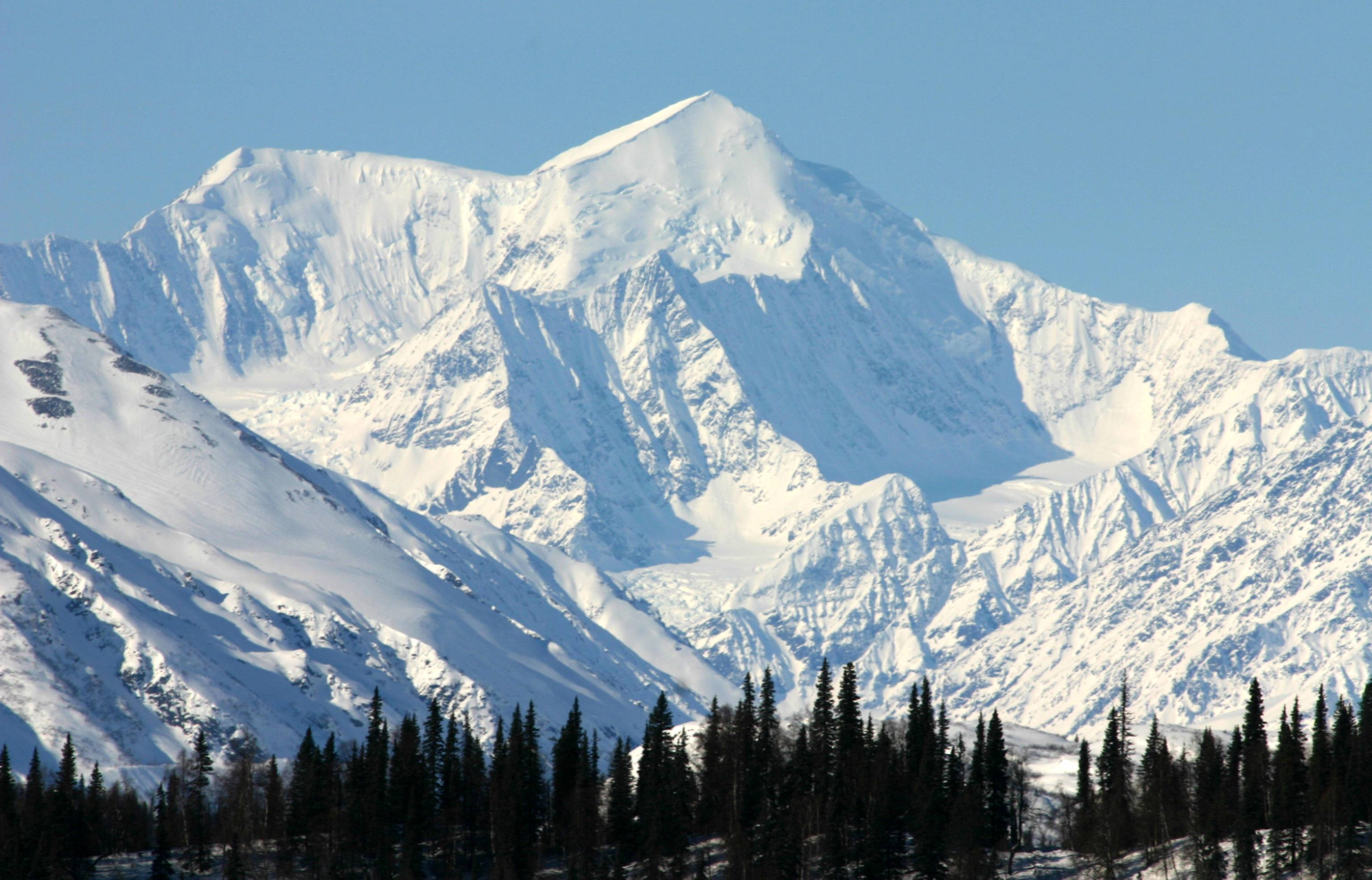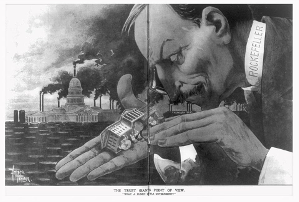Posted January 14, 2025
By Sean Ring
The Trumpire Strikes Back!
It’s Trump week.
This week, we’ll examine Trump’s return to the Oval Office in depth each day. This could have huge ramifications for the market and America.
Yesterday, we covered the 100 or more looming executive orders from Trump’s inbound administration.
Through our countdown series, you’ll be ahead of it all. Okay, for today, we’re going to cover tariffs…
But first: “Mine’s bigger than yours…”
 Denali… or Mount McKinley?
Denali… or Mount McKinley?
When The Donald returns to the Oval Office, one of his official acts is to rename Denali “Mount McKinley.” If you’re like me, you probably didn’t know the name of the US’s tallest mountain ever changed, nor would you care.
But it’s a highly symbolic move away from the woke, PC, saccharine “We’re sorry we conquered you” world and toward the “God Bless America and goddamn everyone else” attitude of the Man from Queens. To be fair, the mountain’s name has been in dispute for over 100 years.
When my friend and colleague Byron King came up with the idea of “The Physics of Donald Trump,” one of the central ideas was that the laws of time and space don’t apply to DJT; he’s somehow above them.
For instance, Trump’s tariff policy was one of the hallmarks of his first presidency. It reflected his broader focus on economic nationalism and his "America First" agenda. Trump’s use of tariffs parallels the policies of William McKinley, a staunch advocate of protective tariffs during his presidency in the late 19th century.
In this piece, we will explore how he wants the American Trumpire to travel back in time to when tariffs dominated the American landscape—to when McKinley was President of the United States.
The “American System,” Rooted in Tariffs
Nowadays, “tariff” is viewed in many circles as a four-letter word. Neoliberal economists despise tariffs.
For decades after World War II, global-oriented politicians, businesspeople, academics, and others worked to reduce tariffs. Things began with the General Agreement on Tariffs and Trade (GATT), which transformed into the World Trade Organization (WTO) over time. Yes, the same WTO that admitted China in 2001, which then grew like gangbusters via a wide-open, export-led process.
The roots of GATT and WTO were in the Great Depression, which many believed was caused by nations closing off foreign trade via high tariffs. That is, export markets were walled off by tariffs, and production and employment collapsed. Well, that’s the very short version.
But it’s worth noting that tariffs were key to national growth from the earliest days of the U.S. Republic in the 1790s. Then, Treasury Secretary Alexander Hamilton promoted the “American System,” in which tariffs protected domestic industries against competition from imports, usually from Britain and other lands.
Another great proponent of tariffs to protect American industry was Abraham Lincoln. He believed in protecting American workers and industries from foreign competition. His idea was that tariffs helped build and maintain U.S. productive power. In fact, Lincoln’s support for tariffs was one factor (out of many, to be sure) that pushed the South to secede in 1861.
And then there’s President William McKinley (1897 – 1901), namesake of that big mountain up in Alaska.
Trump’s Tariff Hero
McKinley was a product of Ohio politics, which rising industrialists of the Gilded Age then dominated. Indeed, one of McKinley’s most generous patrons was John D. Rockefeller, who founded the original Standard Oil company and wanted to keep his near monopoly on oil and refined products in the U.S.

1900 print of Rockefeller eyeballing the White House. “What a funny little government.” Credit: Library of Congress
Coming from this monied milieu, McKinley was a strong protectionist who believed tariffs were essential to safeguard American jobs and industries. He championed the Dingley Tariff Act of 1897, which imposed high import duties to shield domestic industries from foreign competition. At root, McKinley believed a strong industrial base would lead to prosperity for American workers.
In other words, McKinley implemented tariffs during rapid industrial expansion across the U.S. in a world of limited global trade. And yes, McKinley’s tariffs raised significant funds for Uncle Sam, although that was when the federal government spent about 3% of America’s GDP. Right now, it’s about 12x that, at 36%. About half that 3% was to run the Post Office, which paid for itself by selling stamps.
Still, there’s no denying that McKinley’s tariffs raised hard cash for the federal fisc, but again, that was back when the government wasn’t all that big. No welfare state. No Social Security or Medicare. There was no vast bureaucracy, with federal offices in every city and town. Those were the days!
In McKinley’s era, tariff revenues covered the overhead for a small bureaucracy in Washington, D.C., a few other small federal departments like Interior (aka “National Parks”), federal courts, a small Army, a modest Navy, and as the 1900s took hold, even the Panama Canal.
But now, let’s fast-forward to today and the inbound Trump administration.
“The Most Beautiful Word in the World”
“Tariffs,” according to The Donald, is the most beautiful word in the world. He never was much of a romantic.
In his first administration, Trump embraced tariffs to address what he viewed as unfair trade practices by foreign countries, particularly China. Back then, he imposed tariffs on steel, aluminum, and a broad range of Chinese imports, citing the need to protect American industries, reduce the trade deficit, and counter intellectual property theft. These measures ignited trade disputes, most notably with China, leading to retaliatory tariffs and the so-called “trade war.”
Trump’s tariffs were controversial then, and his mere mention of them is controversial now. Supporters argued that they helped revitalize U.S. manufacturing and brought critical industries back to American soil. However, free marketeers noted that tariffs disrupted global supply chains, increased costs for American consumers and businesses, and hurt the agricultural sector due to retaliatory tariffs.
It’s a Global Economy, Donald!
Globalization may be well past its peak, but even today, Trump’s tariffs will hit an immense, highly interconnected global economy. At any given moment, thousands of large ships sail the seas, hauling everything from energy products to mineral ores, foodstuffs, cars, and all those consumer goods on the shelves of Walmart and Ikea. Also, at any moment, about 10,000 aircraft fly through the skies of the world, almost all of them carrying cargo in the holds, usually high-value things like high-end electronics.
So what will it mean when Trump slaps hefty tariffs on almost everything that crosses into the U.S., as he has promised? Will this protect the U.S. economy and strengthen domestic production? Or will it harm many U.S. firms? Will this help you or cost you?
This answer is “Yes…” to all of the above.
Looking back to 2017-21, Trump’s tariff policy was one of the hallmarks of his first presidency. It reflected his broad focus on economic nationalism and his "America First" agenda. Soon after taking office, Trump put tariffs on foreign steel and aluminum, for example, which helped a small number of American metal makers but harmed more than a few downstream users. Plus, the tariffs upset longstanding trade patterns between the U.S. and nearby suppliers in Canada and Mexico. All in all, those metal tariffs helped some companies at one end but harmed companies at the other end.
But that’s not all. Trump placed tariffs on products from many other nations. These ranged from close allies in Europe, Japan, South Korea, and Australia to tariffs on goods flooding the U.S. from China-China-China.
Did these tariffs work? Well, they raised quite a bit of money for the U.S. Treasury, strengthening the dollar and helping keep interest rates low. And sure, some U.S. businesses benefitted.
And guess what? Unlike how he ripped up most of everything that Trump attempted to accomplish in Term One, Joke Biden kept most of those tariffs in place. He, like every other politician, wanted the money.
Wrap Up
We bounced across American history today.
Both Donald Trump and William McKinley presented tariffs as central elements of their economic strategies, albeit in vastly different historical and financial circumstances.
Trump’s tariffs, often described as a throwback to earlier protectionist policies, walk the fine line between the recent version of so-called “free trade” and protecting domestic industries and American jobs. Tariffs form the foundation of a national industrial policy, in this case, with terms set in Washington by trade bureaucrats rather than via what passes for free markets and normal price discovery.
And while we now view McKinley’s tariffs as a quaint byproduct of an industrial age long since vanished, Trump will activate his second term’s tariffs through the complexities of modern global commerce. More than likely, tariffs will cost you money when you buy just about everything, but Trump’s tariffs will also spur domestic investment in new businesses, plants, equipment, jobs, and paychecks.
That’s it for now. More to come in tomorrow’s Rude.

Answering Suzanne’s Cry For Help!
Posted April 25, 2025
By Sean Ring

From Cold War Brilliance to Warmongering Buffoonery
Posted April 24, 2025
By Sean Ring

How a Missed Phone Call May Cost Trump Big
Posted April 23, 2025
By Sean Ring

Charlie Munger’s Mental Models
Posted April 22, 2025
By Sean Ring

The People Who Need and Deserve Our Help
Posted April 21, 2025
By Sean Ring

